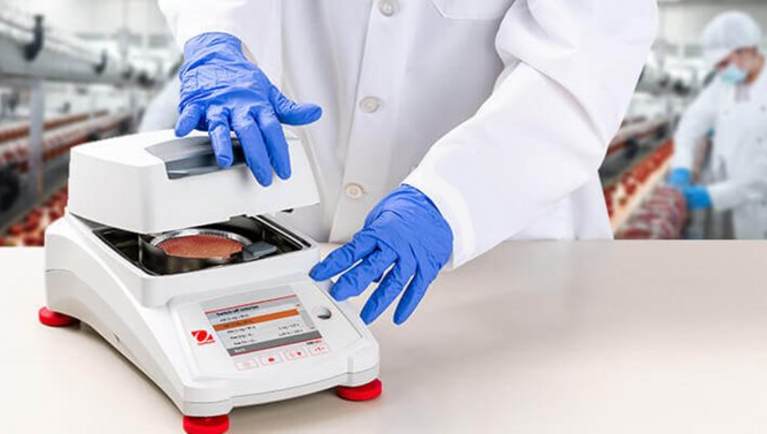Understanding Analyzer Moisture: Importance, Types, and Applications

Moisture is an essential parameter in many industrial processes, and accurate moisture analysis is critical for ensuring the quality, efficiency, and safety of production lines. An analyzer moisture system is a specialized device designed to measure the moisture content within gases, liquids, or solids. Whether in the food industry, pharmaceuticals, oil and gas, or construction, the ability to control and monitor moisture levels can significantly impact product quality, process efficiency, and even regulatory compliance. This article explores the concept of moisture analyzer, their types, functions, and the industries that rely on them.
Importance of Moisture Analysis
Moisture content refers to the amount of water present in a material. This value can affect various physical and chemical properties, including weight, density, stability, and shelf life. Moisture control is critical for several reasons:
- Quality Control: In industries like food and pharmaceuticals, maintaining the correct moisture content is crucial to ensure product quality, texture, and stability.
- Process Efficiency: Excess moisture can lead to inefficiencies, such as increased drying times or energy consumption. Conversely, inadequate moisture levels may affect product handling or result in mechanical wear in some industries.
- Safety: In industries such as oil and gas or chemicals, moisture can lead to corrosion, contamination, or even hazardous reactions.
- Cost Efficiency: Maintaining optimal moisture levels ensures fewer rejected batches and reduces waste, resulting in cost savings.
Types of Moisture Analyzers
Moisture analyzers come in various forms, each suited to specific applications. The most commonly used types include:
- Gravimetric Moisture Analyzers
- Principle: This method is based on weight loss when a sample is heated. The difference in weight before and after heating indicates the amount of moisture evaporated.
- Applications: Primarily used in laboratories for precise measurement, particularly in food, pharmaceuticals, and agricultural products.
- Advantages: Accurate and reliable results.
- Disadvantages: Time-consuming, labor-intensive, and not ideal for continuous real-time measurement.
- Capacitance Moisture Analyzers
- Principle: Capacitance moisture analyzers measure the dielectric constant of the material. Moisture has a higher dielectric constant than most solids, so changes in capacitance provide an indication of the moisture content.
- Applications: Commonly used in continuous, real-time monitoring applications such as the food processing and plastics industries.
- Advantages: Real-time monitoring, non-destructive, and suitable for continuous processes.
- Disadvantages: May not be as accurate for materials with low moisture content.
- Infrared (IR) Moisture Analyzers
- Principle: Infrared analyzers use radiation to heat the sample, and the amount of moisture is determined based on the energy absorbed by water molecules.
- Applications: Suitable for various industries like pharmaceuticals, chemicals, and food.
- Advantages: Fast analysis, non-contact method, suitable for in-line or laboratory use.
- Disadvantages: More expensive than gravimetric analyzers and requires calibration for different sample types.
- Microwave Moisture Analyzers
- Principle: Microwaves are absorbed by water molecules, and the absorption is proportional to the moisture content. Microwave analyzers can measure moisture in thick or dense samples.
- Applications: Widely used in the construction materials industry (for concrete, for example), agriculture, and textiles.
- Advantages: Deep penetration for bulk samples, fast, and accurate.
- Disadvantages: More costly and requires careful calibration.
- Karl Fischer Titration
- Principle: A chemical titration method specifically designed to measure water content in a sample by reacting water with iodine.
- Applications: This method is highly accurate and is used for moisture determination in pharmaceuticals, oils, chemicals, and other materials requiring precise measurement.
- Advantages: Extremely accurate for low moisture content.
- Disadvantages: Requires skilled personnel and is labor-intensive.
Industrial Applications of Moisture Analyzers
Moisture analyzers play a crucial role in a wide range of industries. Below are some examples:
- Food and Beverage Industry:
- Moisture content significantly affects the texture, taste, and shelf life of food products. High moisture can lead to microbial growth, while low moisture can result in poor texture. Moisture analyzers are used to ensure compliance with regulations and maintain product consistency.
- Pharmaceutical Industry:
- In pharmaceuticals, moisture levels must be tightly controlled to maintain the stability and effectiveness of active ingredients. Excess moisture can cause the breakdown of sensitive components, while too little moisture can affect drug solubility.
- Oil and Gas Industry:
- Moisture in oil and gas pipelines can lead to corrosion, reduced efficiency, and equipment damage. Moisture analyzers help maintain the safety and efficiency of operations by monitoring moisture in hydrocarbons, natural gas, and other related materials.
- Construction Materials:
- In the production of materials like cement, plaster, and concrete, moisture levels are critical for product performance. Too much moisture can weaken materials, while too little can make processing difficult. Microwave and capacitance moisture analyzers are commonly used in this industry.
- Plastics and Polymers:
- In plastics manufacturing, moisture affects the viscosity and overall quality of the final product. Moisture analyzers help monitor and control the moisture content in resins before and during processing to prevent defects.
Choosing the Right Moisture Analyzer
Selecting the right moisture analyzer depends on several factors:
- Material Type: Different analyzers are more suited to solids, liquids, or gases. For example, Karl Fischer titration is ideal for liquids, while infrared and microwave analyzers are better for solid materials.
- Accuracy Needs: If precise moisture measurement is required, such as in pharmaceuticals, Karl Fischer or gravimetric analyzers may be more appropriate. For bulk, less sensitive materials, capacitance or infrared analyzers may be sufficient.
- Speed and Efficiency: In-line, continuous processes require fast, real-time analysis, so infrared or capacitance moisture analyzers are ideal. Batch processes might be better suited to gravimetric methods.
Conclusion
Moisture analyzers are invaluable tools across multiple industries, allowing for precise control of moisture content to optimize product quality, safety, and efficiency. Whether through gravimetric methods, infrared technology, or chemical titration, these instruments provide the critical data needed for process control and product optimization. When selecting a moisture analyzer, it’s essential to consider the material, the required level of precision, and the specific needs of the application to ensure effective moisture monitoring.




